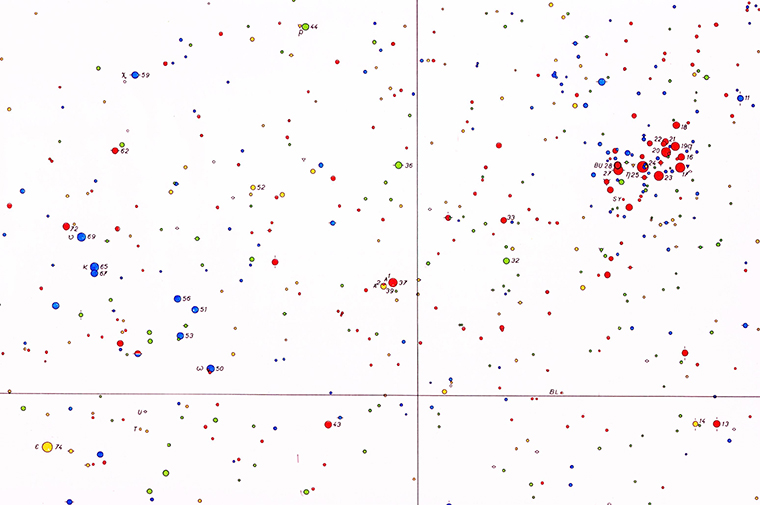Music Eclipticalis
This is a song that uses stellar data and users' interactions to generate unique and continuous music. At any given time, the song plays the 16 brightest stars as musical notes based on their positions within a floating musical staff in the sky. The user may move the sky to change which stellar notes are being played.
Music Eclipticalis was inspired by John Cage's Atlas Eclipticalis. To create his score, Cage superimposed musical staves over the star charts of the Atlas Eclipticalis 1950.0, an atlas of the stars published in 1958 by Antonín Bečvář, a Czech astronomer.
 Plate from Antonin Becvar's Atlas Elipticalis, 1958. Astronomical Institute
Plate from Antonin Becvar's Atlas Elipticalis, 1958. Astronomical Institute
 A sketch by John Cage for Atlas eclipticalis. NYPL Digital Collections
A sketch by John Cage for Atlas eclipticalis. NYPL Digital Collections
Cage compiled eighty-six instrumental parts through the tracing of the star charts onto scored music paper, to be played in whole or part by any ensemble, chamber or orchestra.
The stellar data used for this song was taken from the HYG Database, which is a combination of the Hipparcos Catalog, the Yale Bright Star Catalog, and the Gliese Catalog of Nearby Stars. The star selection is limited to stars visible to the human eye in the region between -30 and +30° of declination, the region represented in the original Atlas Eclipticalis 1950.0.
The code that powers this song and interface is free and open source. Read more about the process of creating this song and find more data-driven music at Data-Driven DJ.